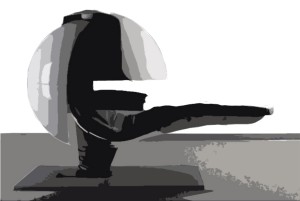Bring napping pods to the University
I hit the “snooze” button three times this morning. It’s a fitting metaphor for my mental state as midterms continue to disturb my peace this week. But I am far from alone in experiencing a constant state of mental exhaustion that so many of my fellow Trojans find themselves in.
So when I attend The Sleep Revolution College Tour, which comes to USC in a couple weeks, it’ll be groggy-eyed and accompanied with a yawn. Based on Arianna Huffington’s new book about the importance of sleep, the renewed interest in the role of a good night’s rest to mental health could not come at a more critical time during the semester.
Following the University’s health promotion initiatives — through appointing wellness advocates or offering free swag at the Engemann Health Center — USC should use The Sleep Revolution tour as an opportunity to engage more critically with the question of whether the role of sleep is missing in conversations about wellness on campus. The University should also demonstrate its commitment to this issue by implementing a new student initiative pioneered at UC Berkeley earlier this year: napping pods.
Formally called Relaxation Enhancing Study and Tranquility zones, napping pods look a bit like egg incubators that a fifth-grader might introduce at a science fair — except they’re seven feet across and made for grown adults. The Associated Students of the University of California aren’t the first ones to use the chairs, which have formed the fabric of worker lifestyles in companies like Google, Zappos and Cisco to optimize productivity.
Granted, at UC Berkeley, REST zones cost a steep $104,000 for 40 napping pods. It’s a fair question to wonder whether these kinds of funds would be better allocated to addressing mental health problems or other pressing wellness issues on campus. Napping pods are, admittedly, a band-aid solution to the bigger problems of stress culture and mental health. But sleep is still an essential part of the conversation on overall wellness, and the establishment of napping pods on campus could be the first step to creating a culture more conducive to healthier sleep patterns.
Student involvement at the University, and at universities across the country, is at an all-time high, which means that more than ever, students are spending long hours in clubs, organizations, sports teams, internships and jobs — many of which occur at night. I, for one, often don’t leave the Daily Trojan newsroom until 9 p.m. on weeknights, after which I might begin my homework and assignments for classes.
An unfortunate consequence of the go-getting spirit that has led to students take on multiple identities — not only student, but also research assistant, intern, volunteer and young change-maker — is that college students today are doing much, much more than students of the past. The commitments that creep regularly into the night hours lead inevitably to a fundamental change in the way that college students function on campus. So the traditional model of sleep — eight hours every night — may not be realistic in a climate that is making our days longer than ever.
Empirical evidence supports the claim that naps are uniquely beneficial to college students. Matthew P. Walker, an assistant professor of psychology and neuroscience at UC Berkeley, found that young adults who napped for 90 minutes after lunch improved their ability to learn. Not only could napping pods work to improve memory and cognition, but they could also work to radically change the way we view our lifestyles on campus and the importance of addressing our own physical and mental demands.
When I leave for class in the morning, I am utterly useless without an array of chargers for my laptop, phone and other electronics. Periodically throughout the day, I seek to plug in when I can to make sure these essentials are constantly recharged and ready for full performance. I’ve made this practice regular after days of returning home with a dead phone.
Now, I wonder, what would it be like if we charged our own batteries as often as we did those of our iPhones?
Sonali Seth is a sophomore majoring in political science and policy, planning, development. She is also the editorial director of the Daily Trojan. “’SC, What’s Good?” runs every other Thursday.


Interesting idea.